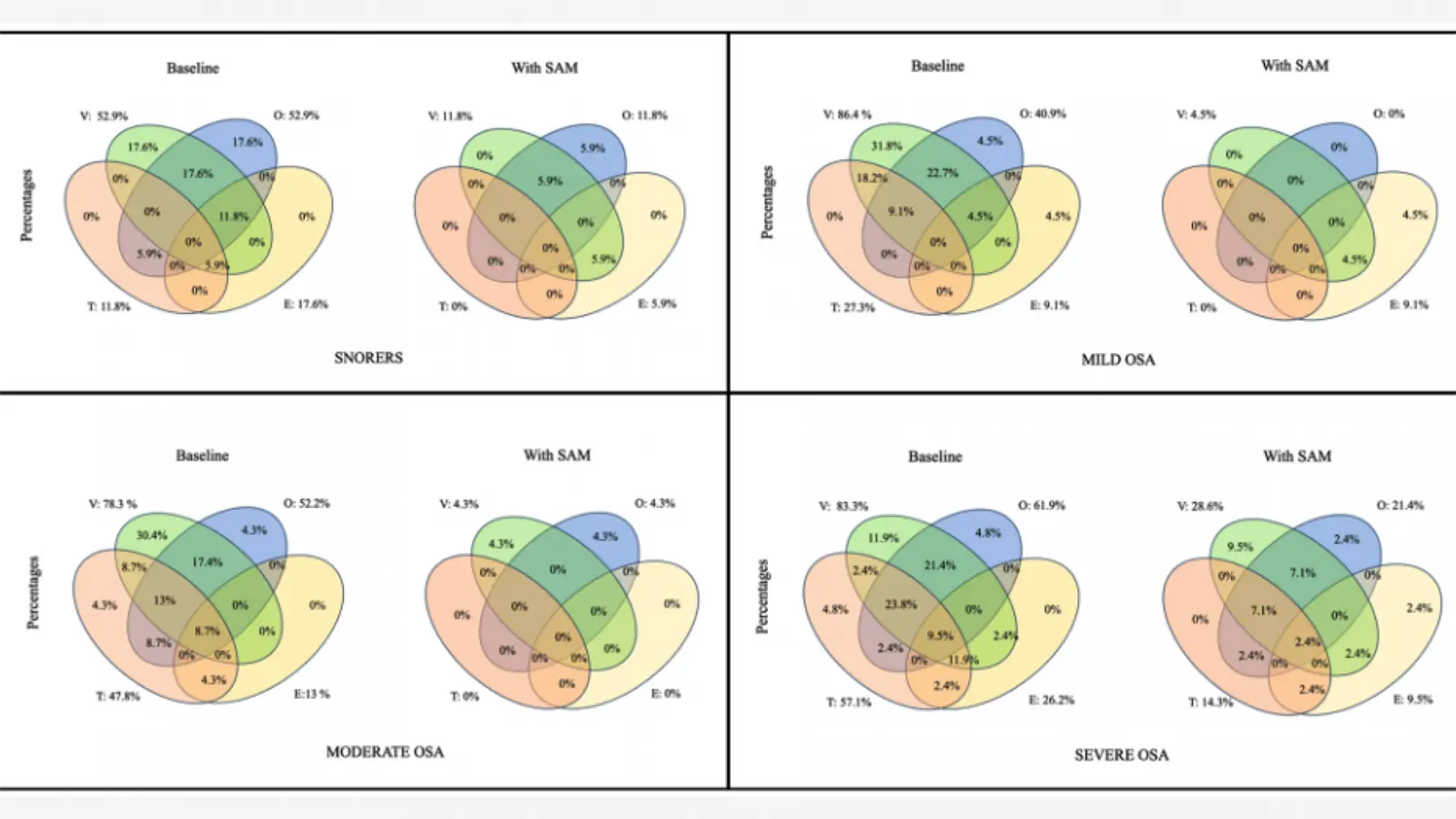Abstract
Background: Mandibular advancement devices (MADs) are an effective treatment for patients with sleep-related breathing disorders, with variable response. Increasingly more research points to the predictive value of Drug-Induced Sleep Endoscopy (DISE) in patient selection. This study aims to analyze the changes in upper airway collapsibility using a titratable MAD simulator during DISE. Methods: This study included 104 patients with simple snoring and obstructive sleep apnea (OSA). The VOTE scale was used to assess the presence of collapses during the DISE both without and with the MAD simulator. Results: In snorers, there was a decrease in collapses at the level of the soft palate and oropharynx when the advancement was achieved. Patients with mild OSA also showed a decrease in collapses at the base of the tongue. Patients with moderate/severe OSA exhibited significant amelioration at all levels. The levels at which there were residual collapses despite the maneuver were, in order, the velopharynx, oropharynx, epiglottis, and tongue. Conclusions: The MAD simulator reduces collapsibility at all levels and in all severity groups. Residual collapses suitable for combined treatments were able to be identified. This highlights the need for individualized patient selection, as upper airway collapsibility exhibits variable improvement or worsening with the MAD simulator regardless of the severity of the condition. Read More


